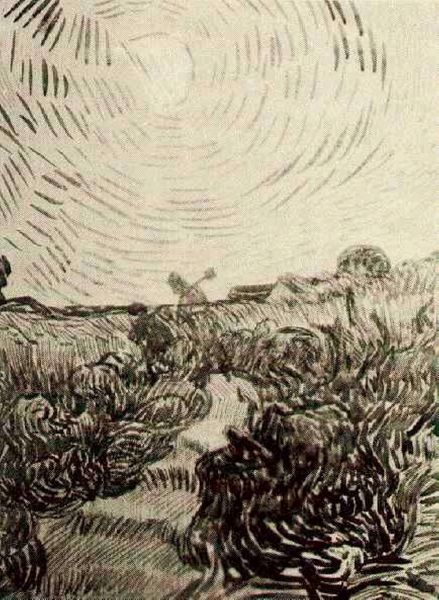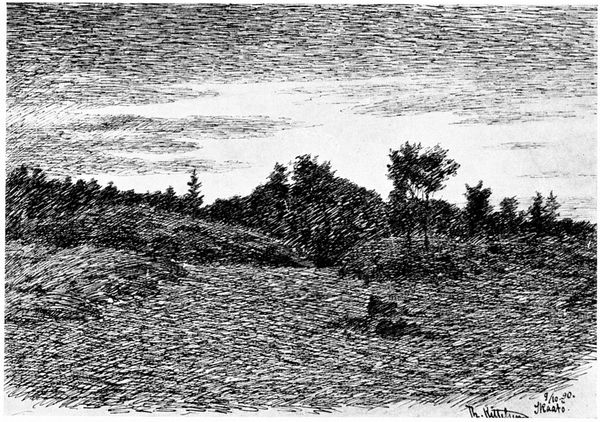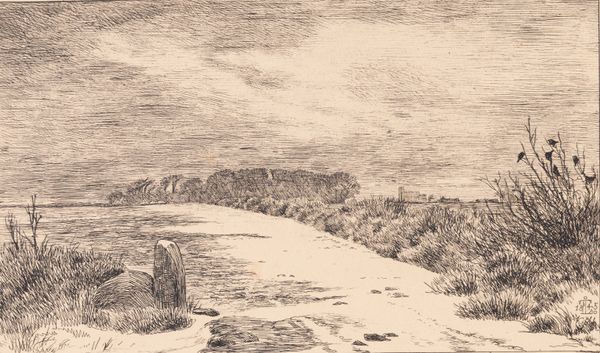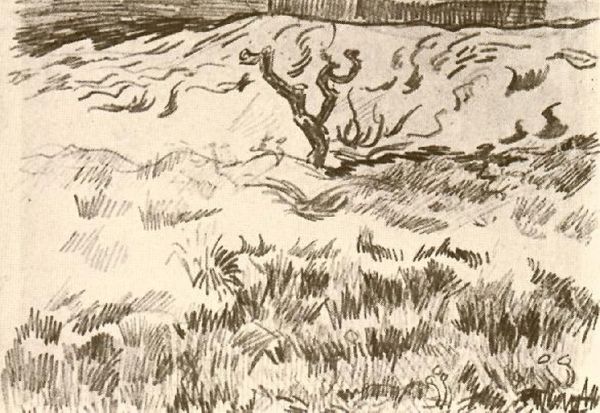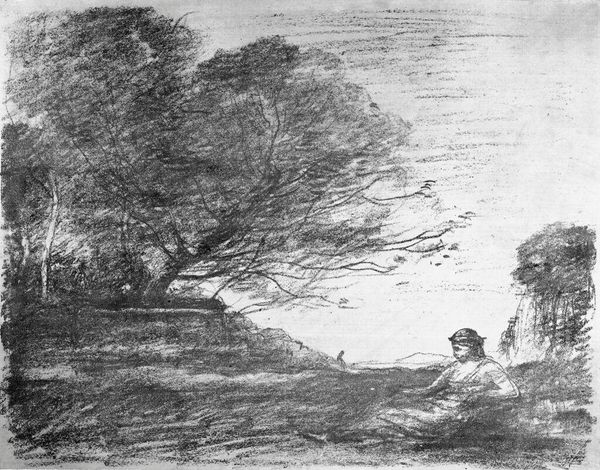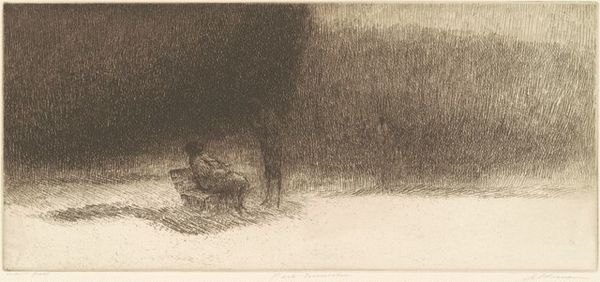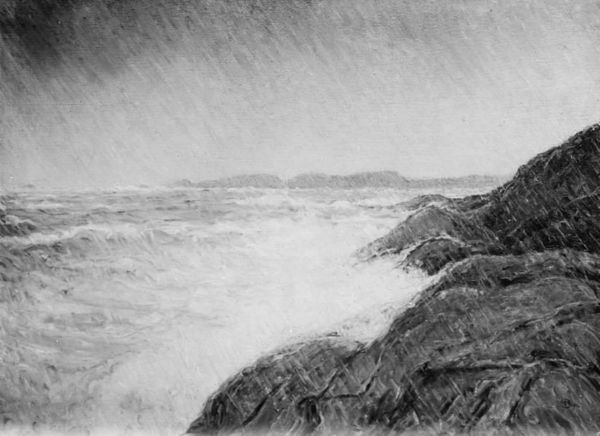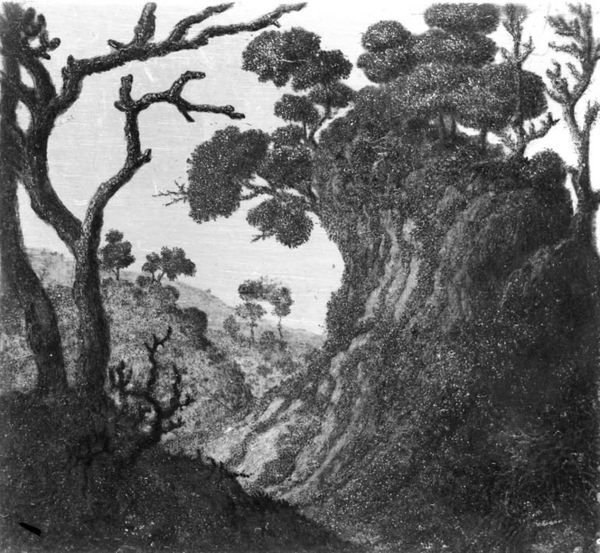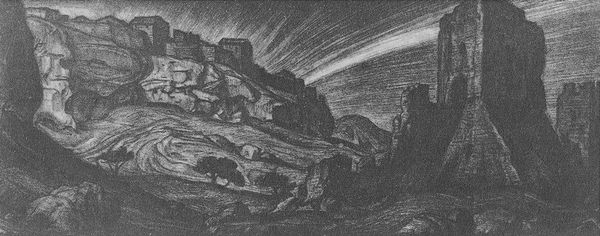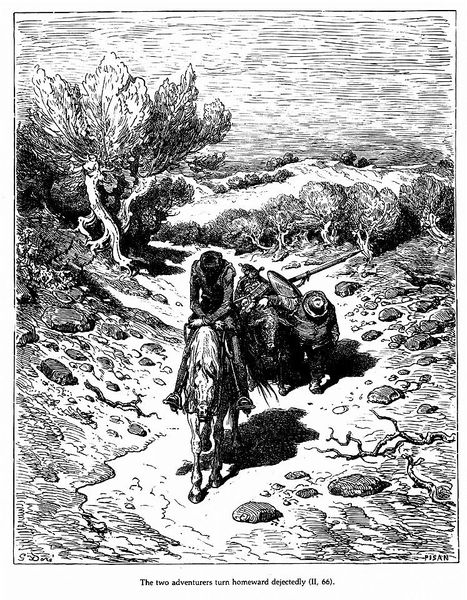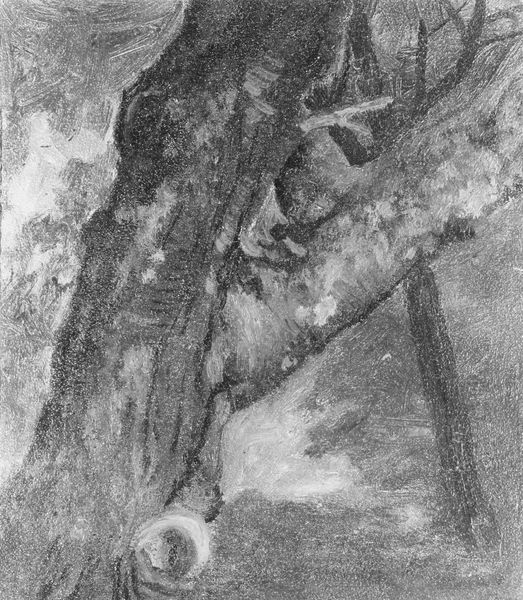
Copyright: Public domain
Editor: So here we have Theodor Kittelsen's "Peer Gynt 11", a drawing from 1890 rendered in ink and pencil. It's quite stark. What I notice most is the intense focus on texture through the drawing medium, almost giving the landscape a melancholic and heavy feel. What's your interpretation? Curator: The beauty lies in dissecting how Kittelsen uses readily available, affordable materials like pencil and ink to evoke such powerful emotions. This wasn't some grand oil painting for a wealthy patron, but a work crafted with the humble tools of the everyday, reproduced via photography, making it accessible to the masses. How does the mass production affect your perception? Editor: It's interesting to think about it being accessible at a time when art felt quite elitist. Does the subject matter itself connect to labor, or other materials-focused topics? Curator: Absolutely. Think about the folklore Kittelsen was illustrating: "Peer Gynt." It's a story about identity, nationalism and wandering, but the tale is about a farmer- a laboring person if you will. The material reality – cheap materials, reproducibility, broad distribution- democratizes both the image and the *narrative*, subverting established art hierarchies. We have here a landscape made and distributed with a critical voice. Editor: I didn’t think about it that way, but that is quite interesting! Thank you. I have never quite analyzed the medium in this way before, it's truly eye-opening. Curator: Likewise! Thinking about the process and the context has offered a completely different view into a new piece of art, and isn't that wonderful?
Comments
No comments
Be the first to comment and join the conversation on the ultimate creative platform.
